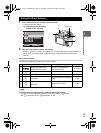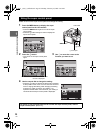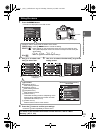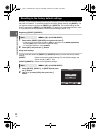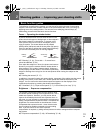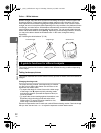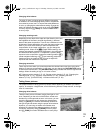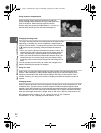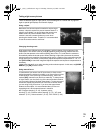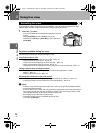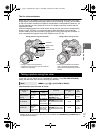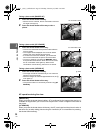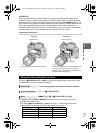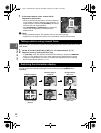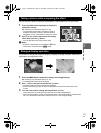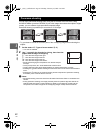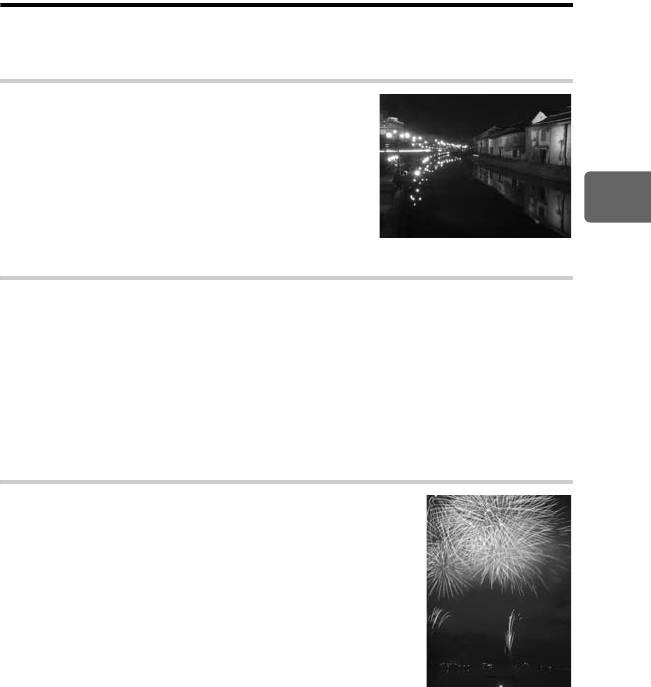
35
EN
2
Shooting guides k Improving your shooting skills
Taking night scene pictures
There are different types of night scenes, from the afterglow of a sunset and city lights at
night to special light displays and firework displays.
Using a tripod
Because a slow shutter speed is needed to capture night
scenes, a tripod is required to prevent camera shake. If a
tripod is not available, you should place the camera on a
stable surface to prevent camera shake. Even if the
camera is secured, camera shake may occur when
pressing the shutter button. Therefore, it is recommended
to use the remote control or self timer.
Changing shooting mode
Night scenes have different levels of brightness, and the balance of the brightness in the
composition is not uniform. Start by using A (aperture priority shooting) mode to take the
picture. Set the aperture to the medium setting (about F8 or F11) and allow the camera to
automatically select the shutter speed. When shooting a night scene, because the camera
sets the exposure to match the dark areas which occupy a majority of the composition and the
image often turns out whitish (overexposed), adjust the exposure compensation to -1 or -1.5.
Use [REC VIEW] to check the image and adjust the aperture and exposure compensation as
necessary.
Image noise can easily occur when shooting at slow shutter speeds. In this case, set [NOISE
REDUCT.] to [ON] to reduce noise.
Using manual focus
In cases where you cannot use AF (auto focus) to focus on the
subject because the subject is too dark or you cannot focus in time
to take pictures, such as during a fireworks display, set the AF
mode to [MF] (manual focus) and focus manually. To take pictures
of night scenes, turn the focus ring of the lens and check whether
you can see the lights of the night scene clearly. To take pictures of
a fireworks display, adjust the focus of the lens to infinite unless
you are using a long focus lens. If you know the approximate
distance to the subject, it is recommended that you focus on
something that is at the same distance in advance.
g“Program shooting” (P. 43), “Aperture priority
shooting” (P. 43), “Remote control shooting” (P. 57), “AF mode
selection” (P. 51), “Noise reduction” (P. 65), “REC VIEW” (P. 90)
s0016_e_00_0_unified.book Page 35 Monday, February 18, 2008 2:43 PM



